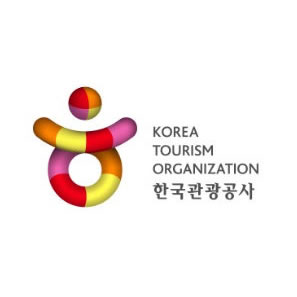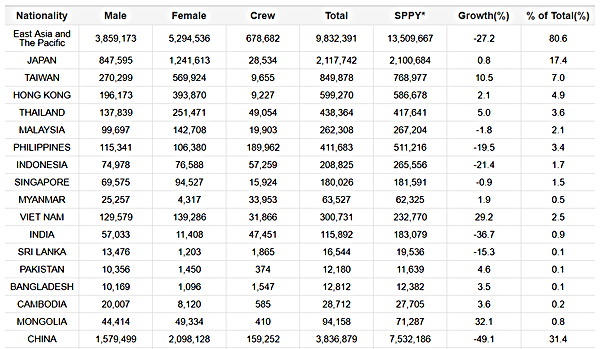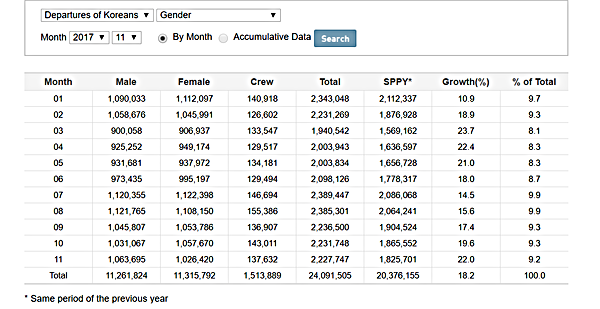 SOUTH KOREA. The slump in Chinese visitor arrivals to South Korea eased in November amid an apparent resolution to the THAAD anti-missile system dispute between the two countries.
SOUTH KOREA. The slump in Chinese visitor arrivals to South Korea eased in November amid an apparent resolution to the THAAD anti-missile system dispute between the two countries.
Chinese arrivals fell -42.1% year-on-year in November to 299,247 (27.4% of total visitors), hardly a good result but significantly better than the successive -66.6%, -64.1%, -66.4%, -69.3%, -61.2%, -56.1% and -49.3% monthly declines from April onwards.
The Korea Tourism Organization’s latest figures seem to confirm the expected gradual return of Chinese tourists to South Korea. The results are the best since March (-40%) when China enforced a ban on group tours to South Korea over the latter’s deployment of the US anti-missile system THAAD.
South Korean duty free retailers claim to have been particularly hard hit by the fall in Chinese tourism. In 2016, Chinese visitors accounted for 46.8% of total arrivals but near 70% of duty free spending.
Perversely, however, The Korean Duty Free Association said that foreign shoppers purchased US$983 million worth of duty free goods in the month, an all-time November high. Total sales, including those to South Korean customers, reached US$1.22 billion in the month. That sales spurt appears to have been driven by the daigou shopping phenomenon, also known as ‘shuttle traders’ in South Korea.
In August, the excellent Chinese travel and luxury report Jing Daily (with whom The Moodie Davitt Report works closely) ran a hard-hitting report entitled, ‘Korean Duty-Free Shop Sales Increase Due to Illegal Daigou Shoppers’.
The article said: “The [March] ban on tourist groups allowed independent daigou shoppers to dominate the gray market, many of them leveraging social media to take requests online and travel to duty free stores with a specific purpose in mind.”
It continued: “Duty free shops are also willing to pay a high cost to work with KOLs in China to maximise those marketing messages. But fearful of the political impact, many of the KOLs turned down the tempting offers, leaving daigou to become the last straw for duty free stores.”

For the first 11 months, Korean departures rose +18.2%, while Chinese arrivals fell -49.1% and Japanese arrivals edged ahead by +0.8%.















